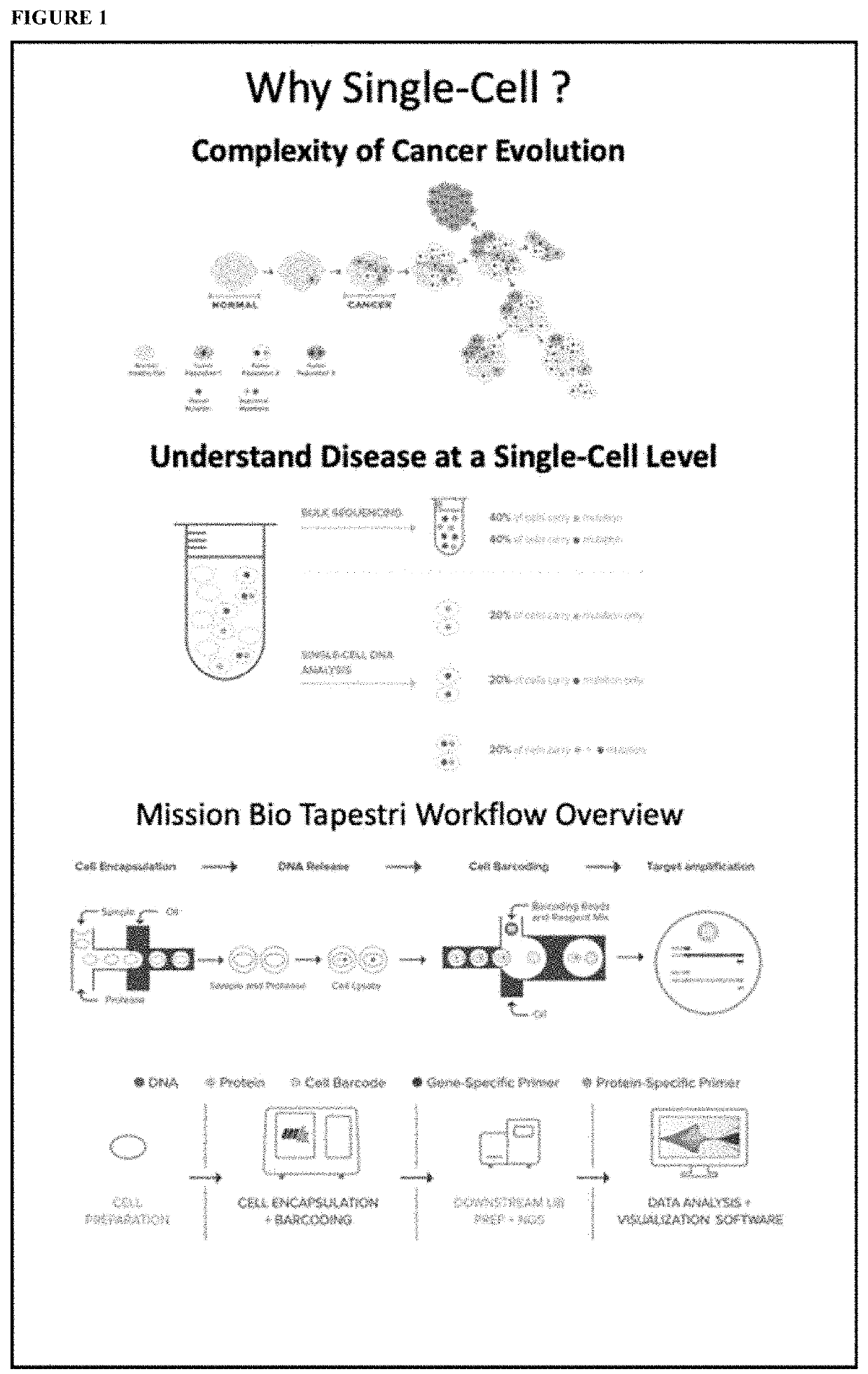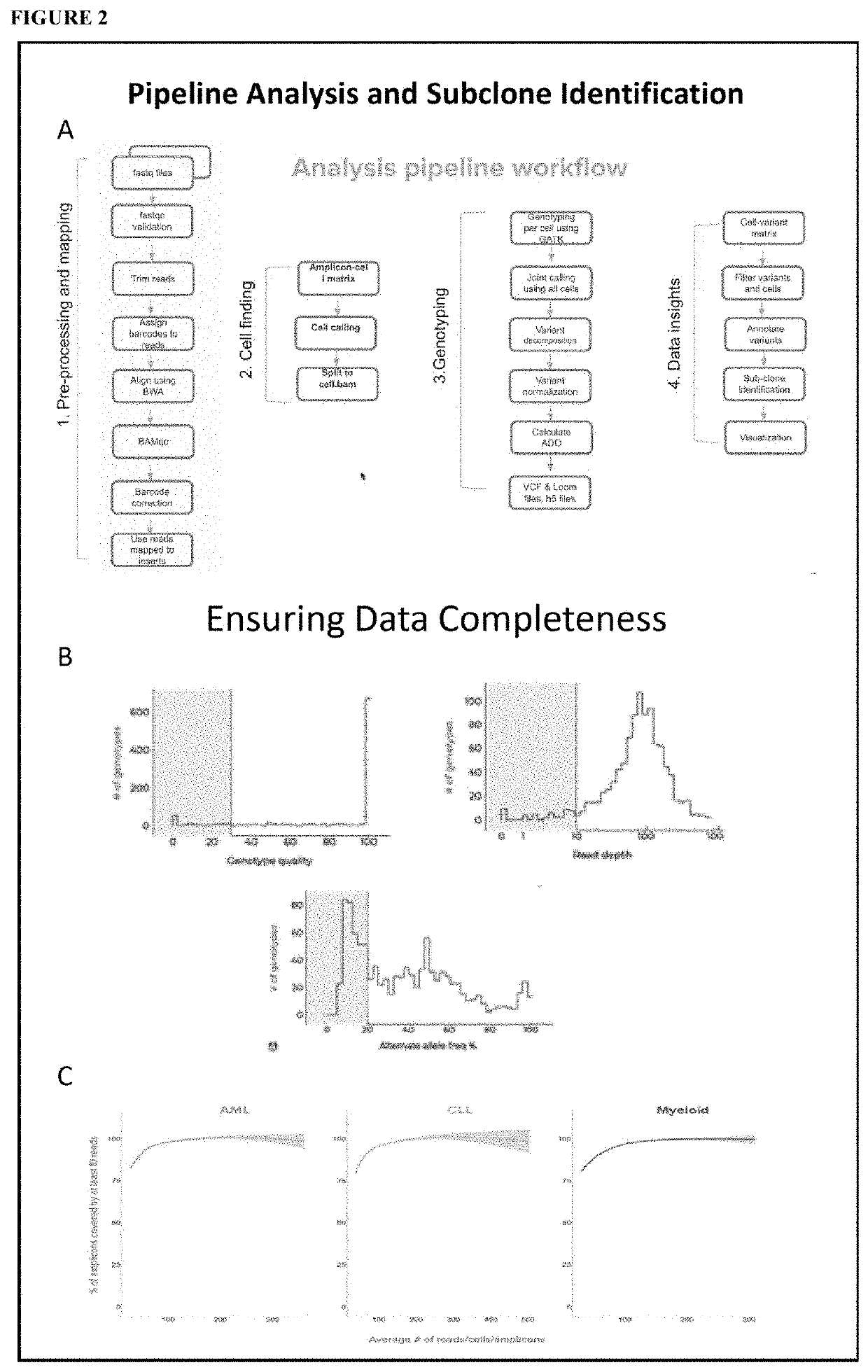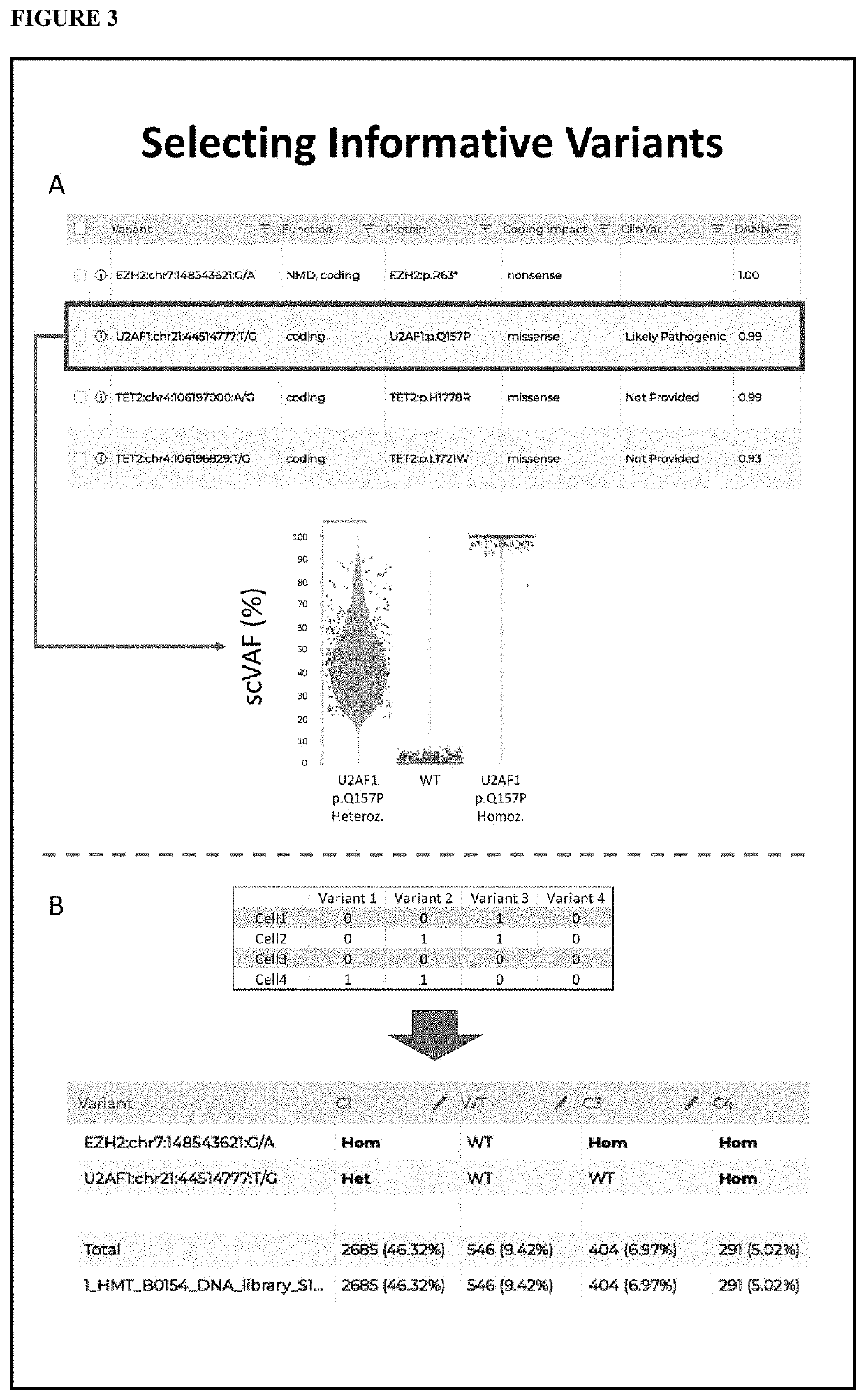Method and systems to characterize tumors and identify tumor heterogeneity
- Summary
- Abstract
- Description
- Claims
- Application Information
AI Technical Summary
Benefits of technology
Problems solved by technology
Method used
Image
Examples
example i
Methods to Identify Tumor Heterogeneity
[0074]In this Example we present subclone identification method using data generated on the Tapestri™ single-cell DNA platform and analyzed by Tapestri™ analytical workflow. The pipeline steps involve obtaining raw reads from the sequencer, removing adapters, aligning and mapping the reads, calling individual cells, and identifying genetic variants within each cell. After filtering for high quality variants, we then filter for data completeness to ensure only high quality data is used in downstream processing. The variant-cell matrix is then subjected to identification of subclones. Top variants defined the signature of each subclone are also identified. To validate our methodology, we used two different targeted sequencing panels on model systems with known truth mutations. Our pipeline shows the distinct clusters correlating with titration and cell line ratios. Cluster associated signature mutations were also identified. The pipeline can be u...
PUM
| Property | Measurement | Unit |
|---|---|---|
| Heterogeneity | aaaaa | aaaaa |
| Surface | aaaaa | aaaaa |
| Affinity | aaaaa | aaaaa |
Abstract
Description
Claims
Application Information
 Login to View More
Login to View More - R&D
- Intellectual Property
- Life Sciences
- Materials
- Tech Scout
- Unparalleled Data Quality
- Higher Quality Content
- 60% Fewer Hallucinations
Browse by: Latest US Patents, China's latest patents, Technical Efficacy Thesaurus, Application Domain, Technology Topic, Popular Technical Reports.
© 2025 PatSnap. All rights reserved.Legal|Privacy policy|Modern Slavery Act Transparency Statement|Sitemap|About US| Contact US: help@patsnap.com



